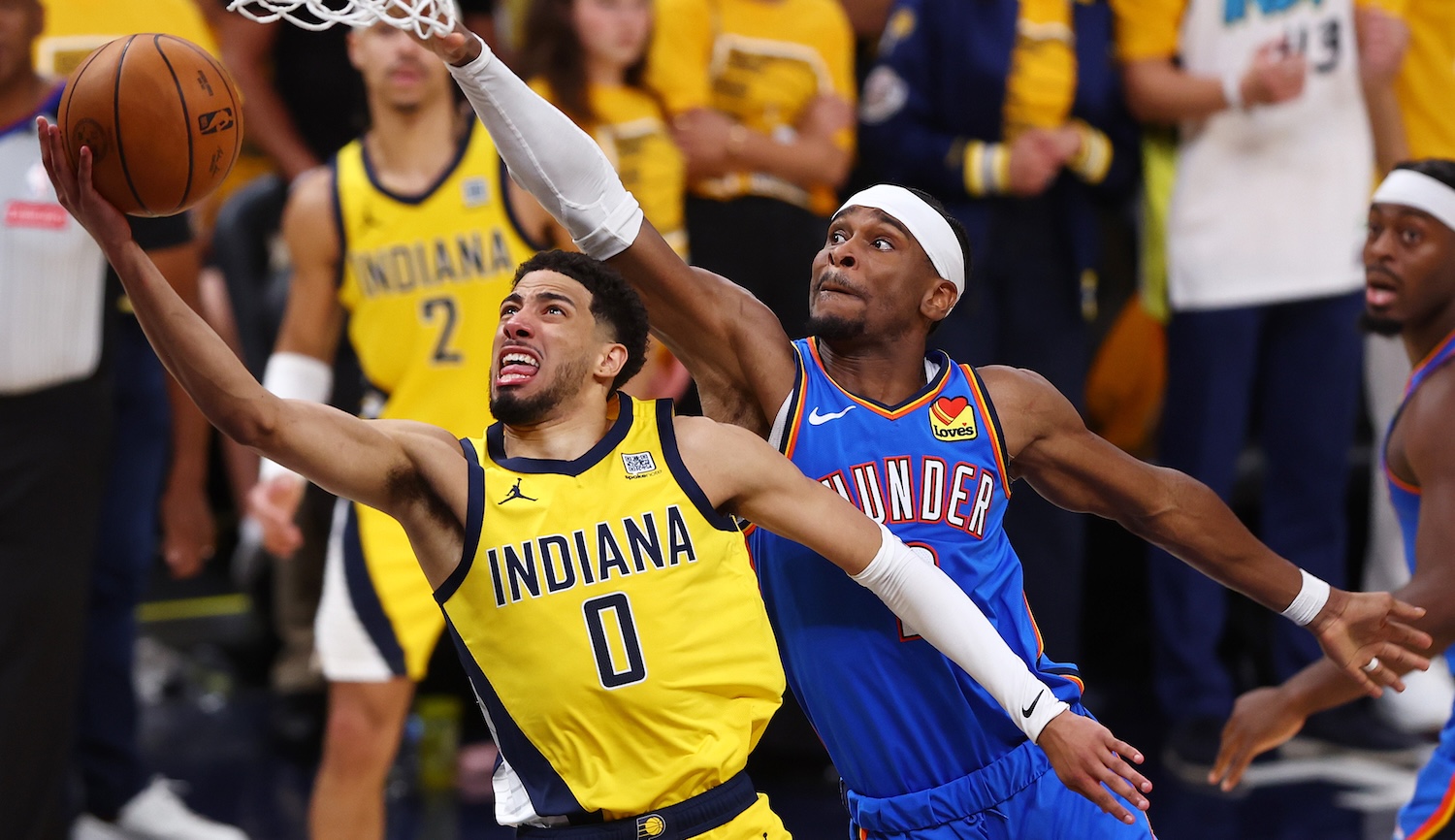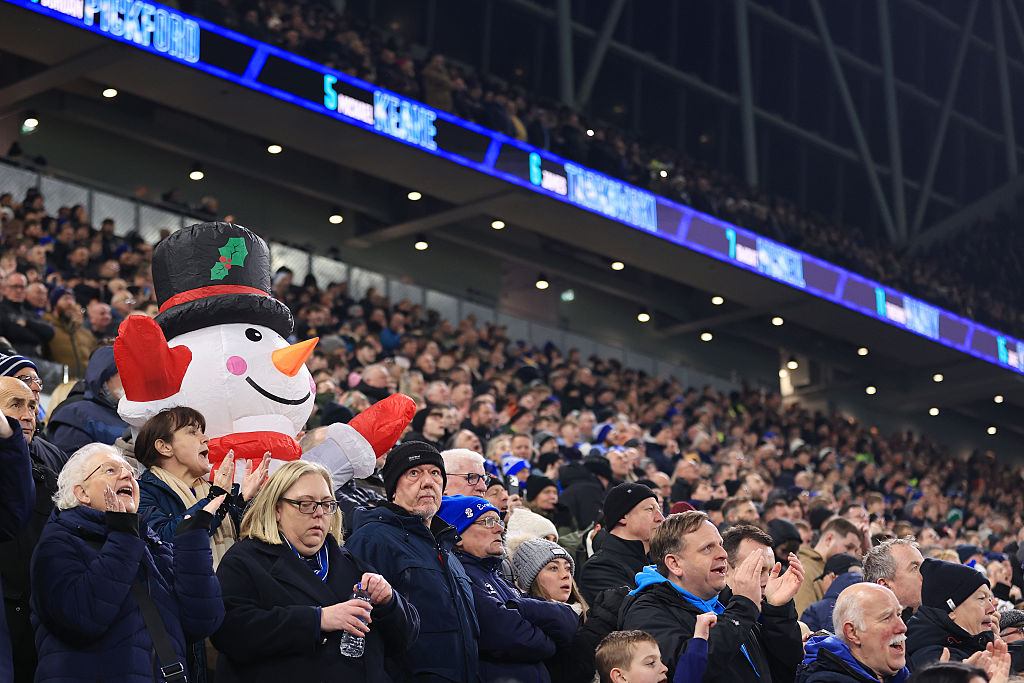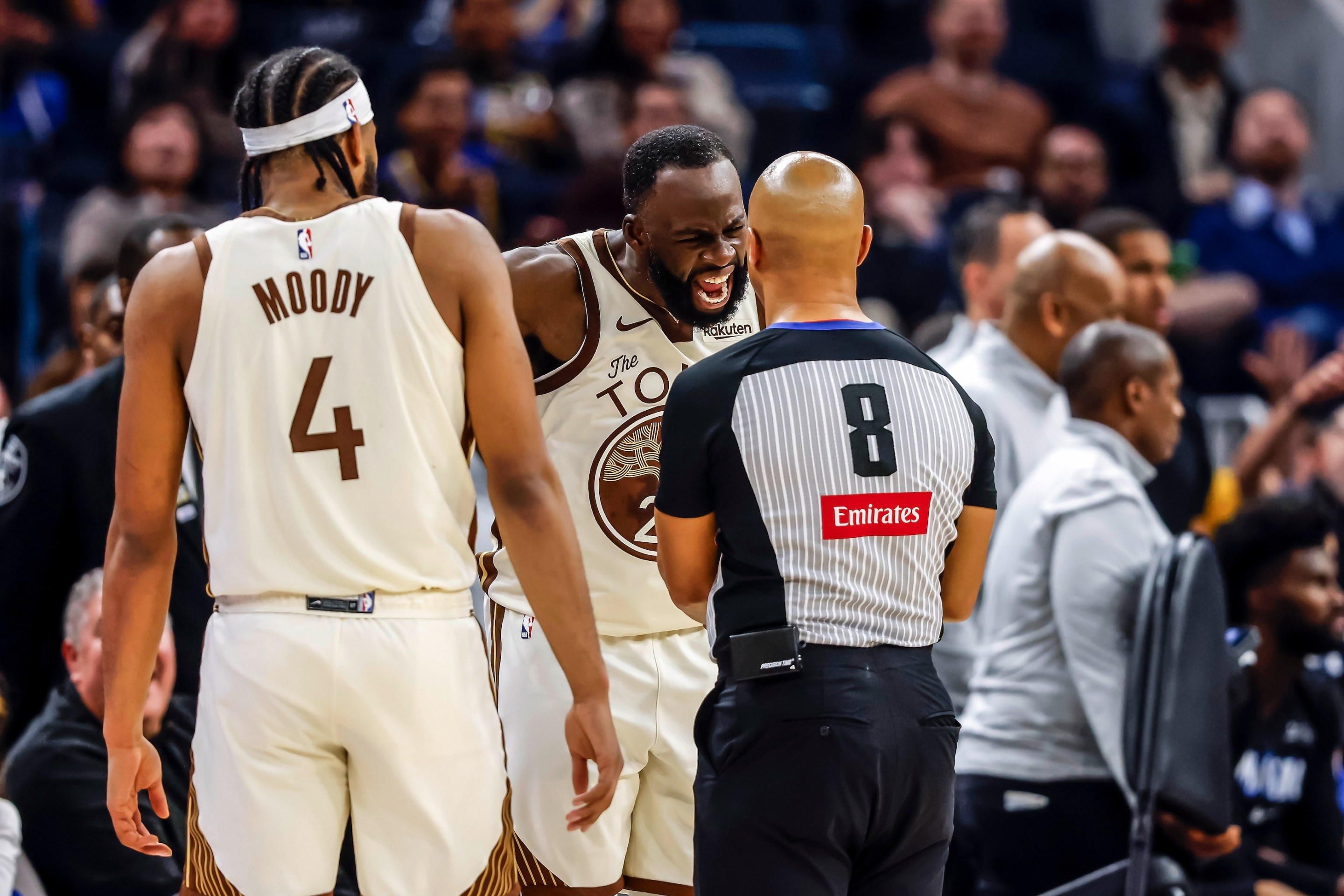There is a defensible reading of Game 4 of the NBA Finals as an aesthetic disappointment, a slugfest of a game defined by Bennedict Mathurin missing a bunch of free throws in the final minute and the Oklahoma City Thunder shooting a collective 3-for-16 from three-point range and recording a collective 11 assists, both season lows. Certainly, if you wanted to read the game through the lens of individual offensive brilliance, you'd find the text lacking, though to do so would be to voluntarily step back from the bleeding edge of basketball. Game 4 was not only the best game of what has been a great series, but a klaxon from the future, the highest-level example of the sort of collective, pure-pressure hoops that's been the story of this season.
The ghastly 3-for-16 figure is an instructive place to start, as it is an extremely aberrant statistic. What it shows is not so much a Thunder offense that played poorly, but a Pacers defense that strung together a near-perfect night of defense. The most thoughtfully articulated concerns about the ubiquity of the three-pointer in modern NBA basketball arrive at the point that the three makes NBA offense fundamentally unstoppable, the spatial advantages of parking a bunch of guys on the perimeter rendering the game into a mere shooting contest. The defense played by both the Pacers and Thunder makes a mockery of that assertion, as both units managed to shut down the opponents' long-range shooting without surrendering open looks at the rim.
Oklahoma City played spread out, and Shai Gilgeous-Alexander would begin possessions by attacking the Pacers' pick-and-roll defense; despite some interesting stuff with screen angle and location, even when he earned an advantage, Indiana swarmed behind the play with such fury that no passing sequence could ever crack open that advantage into a wide-open three. Indiana shot and made more threes, which was only surprising in the moment because they did so against essentially perfect Oklahoma City defense. The Pacers would set a staggered screen for Tyrese Haliburton at the top of the key, and OKC's five defenders, without talking to each other, would make a cascading series of perfect decisions, each man hedging, showing, taking the correct angle to respond to the varying shooting pressures exerted by the varying Pacers' shooters. Mark Daigneault's big innovation was having Chet Holmgren accept Haliburton's invitations to dance, betting that having his big lanky center isolated in space would be slightly less risky than rotating against the fastest hivemind in the game. The Pacers still scored decently well, but everything had to be earned.
The collective level of intensity and pressure ensured that there was almost nothing open or easy all night. Every single possession was fought for and both teams crashed the offensive glass without compromising their transition defense. Indiana and Oklahoma City scored nine and 10 fast break points, respectively, each at least a full point fewer than the worst running team in the NBA posted this season.
I don't think I have ever seen sustained nastiness like this so deep into a postseason. Typically, by this point, the two teams in the Finals are too exhausted to fight like this. They will fight, yes, but it is never this smart. Something like Lu Dort viciously denying Haliburton the ball and grabbing and harassing the shit out of him is not unusual for the Finals, and Dort doing all that nasty bullshit while the rest of his team moves in perfect harmony is something the Thunder have done all year—but the Thunder's crazed level meeting its match is unprecedented. Ditto for Indiana and their swarming collective genius. I wrote about the concept of meeting physicality over a month ago, when most of the remaining teams were dragging ass, yet these two have met and elevated each other's physicality to heights I have never seen before.
Stephen A. Smith locking in on some iPhone solitaire isn't just a potent example of sports media's loudest and most influential pundit not even needing, or valuing, raw material inputs to fuel his regressive, essentially algorithmic takes. It also underscores how revolutionary this Finals has been. The cynical old-timer who measures a playoff series by the verisimilitude of its best players' Michael Jordan cosplay is totally unprepared for this basketball. The sports radio crank, whose sole job is to adjudicate blame based on who choked and determine for whom the lights were too bright, can conceivably quibble with aspects of Haliburton's performance, but only in a way that shows how poorly they understand what is actually going on. New stuff is happening.
Put another way, old stuff is not happening. This Finals has been about the plays that don't happen: the once-open pick-and-pop three that gets rotated out of existence by Pascal Siakam; the Haliburton drive-and-kick-and-kick sequences that end not in an open shot but in Mathurin losing his mind or T.J. McConnell challenging and losing to Holmgren at the rim; the squirmy Alex Caruso stepbacks taken only because every better option, everything the offense actually wants to accomplish, has been taken away.
Any iota of weakness or nanosecond of friction is ruthlessly punished. Offensive possessions are desperate races against time, which makes the stuff that does succeed feel cooler for the pressure it's been forged within. Gilgeous-Alexander and Jalen Williams's incredible two-man game at the end of Game 4's fourth quarter was a very simple game-winning scheme drawn up against very complex defense. Everything Andrew Nembhard does is revelatory. Obi Toppin's explosive masterclass was a triumph of athleticism over organization. It's been an amazing series, is my point, and I want three more games.







